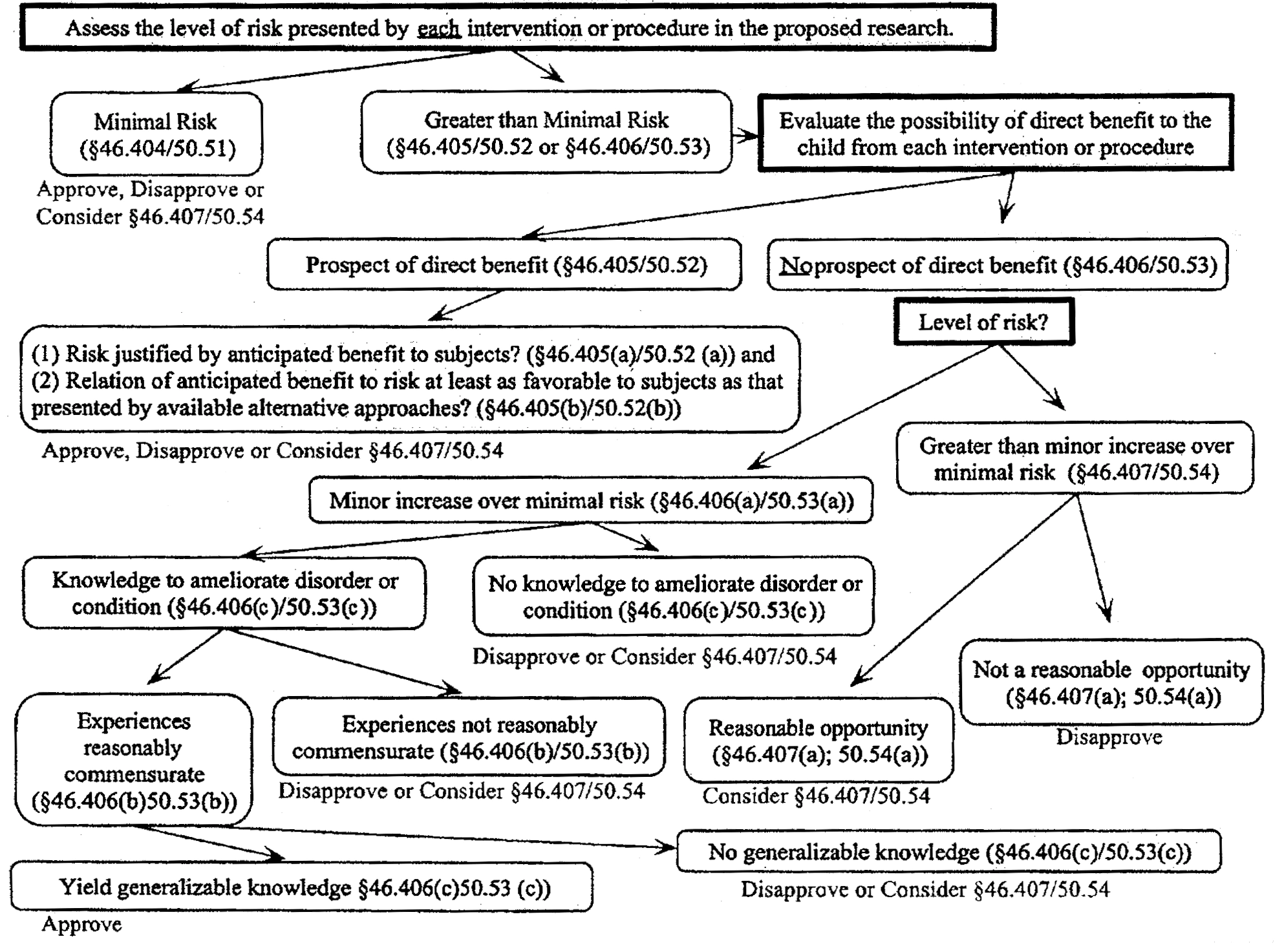Apply the general criteria of 45 CFR 46.111 and 21 CFR 56.111
- §46.111(a)(1) Risks to subjects are minimized: (i) By using procedures which are consistent with sound research design and which do not unnecessarily expose subjects to risk, and (ii) whenever appropriate, by using procedures already being performed on the subjects for diagnostic or treatment purposes.
- §46.111(a)(3) Selection of subjects is equitable. In making this assessment the IRB should take into account the purposes of the research and the setting in which the research will be conducted. The research requires the use of children to answer the scientific questions.
Evaluate the balance of risk to benefit and/or knowledge, in general, and applying the categories of Subpart D.
- §46.111(a)(2) Risks to subjects are reasonable in relation to anticipated benefits, if any, to subjects, and the importance of the knowledge that may reasonably be expected to result.
- §46.111(b) When some or all of the subjects are likely to be vulnerable to coercion or undue influence, such as children, prisoners, pregnant women, mentally disabled persons, or economically or educationally disadvantaged persons, additional safeguards have been included in the study to protect the rights and welfare of these subjects.

For all categories, consider the requirements for parental permission and child assent (§46.408;50.55)
- §46.111(a)(4,5) Informed consent will be sought (and appropriately documented) from each prospective subject or the subject's legally authorized representative, in accordance with, and to the extent required by §46.116 and §46.117.
- §46.111(a)(6) When appropriate, the research plan makes adequate provision for monitoring the data collected to ensure the safety of subjects.
- §46.111(a)(7) When appropriate, there are adequate provisions to protect the privacy of subjects and to maintain the confidentiality of data.




